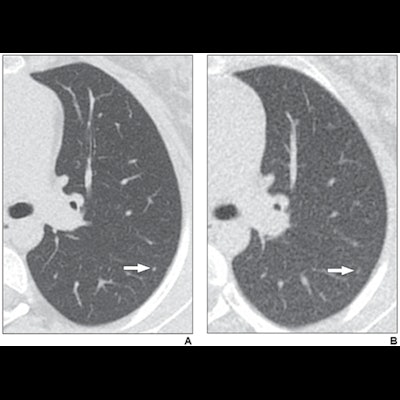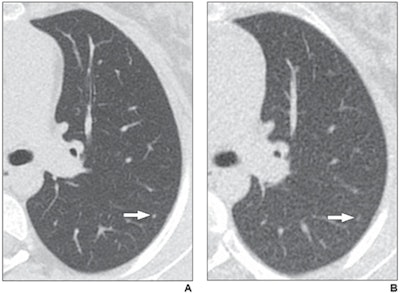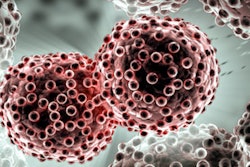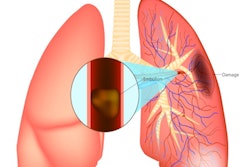
Reduced-dose CT shows effective diagnostic performance for identifying lung nodules in pediatric patients, according to a study published July 7 in the American Journal of Roentgenology. The findings could be good news for a patient population vulnerable to the negative effects of radiation.
A team led by Dr. Samjhana Thapaliya of Cincinnati Children's Hospital Medical Center in Ohio conducted a study that included 78 participants between the ages of 4 and 21 with known or suspected lung cancer. The patients underwent chest CT at standard radiation dose (mean, 1.8 mSv) and an additional exam at reduced dose (mean, 0.3 mSv) -- a dose reduction of 83%. Three radiologists read both the standard and reduced dose exams; their reading performance was assessed with the Kappa statistic.
Of the 78 patients, 45 (58%) had 162 lung nodules identified on CT; of these nodules, 92% were detected on the low-dose exam. The study also found the following regarding intraobserver agreement between standard and reduced-dose CT:
- Moderate to substantial agreement for the presence of nodules (κ = 0.45-0.67)
- Good to excellent agreement for number of nodules (κ = 0.68-0.84)
- Good to excellent agreement for number of nodules nodule size (κ = 0.69-0.86)
 Axial reformatted clinical (1.083 mSv) and reduced dose (0.318 mSv) CT images from a 17-year-old girl with osteosarcoma. A 2-mm left lower lobe nodule is clearly visible in the left lower lobe on the clinical CT image (arrow in A). The same nodule is vaguely apparent on the reduced-dose CT image (arrow in B), classified as present but poorly visible. Images and caption courtesy of the American Journal of Roentgenology.
Axial reformatted clinical (1.083 mSv) and reduced dose (0.318 mSv) CT images from a 17-year-old girl with osteosarcoma. A 2-mm left lower lobe nodule is clearly visible in the left lower lobe on the clinical CT image (arrow in A). The same nodule is vaguely apparent on the reduced-dose CT image (arrow in B), classified as present but poorly visible. Images and caption courtesy of the American Journal of Roentgenology."CT performed at 0.3 mSv mean effective dose has acceptable diagnostic performance for lung nodule detection in children and young adults and has the potential to reduce patient dose or expand CT utilization (e.g., to replace radiography in screening or monitoring protocols)," the team concluded.




















